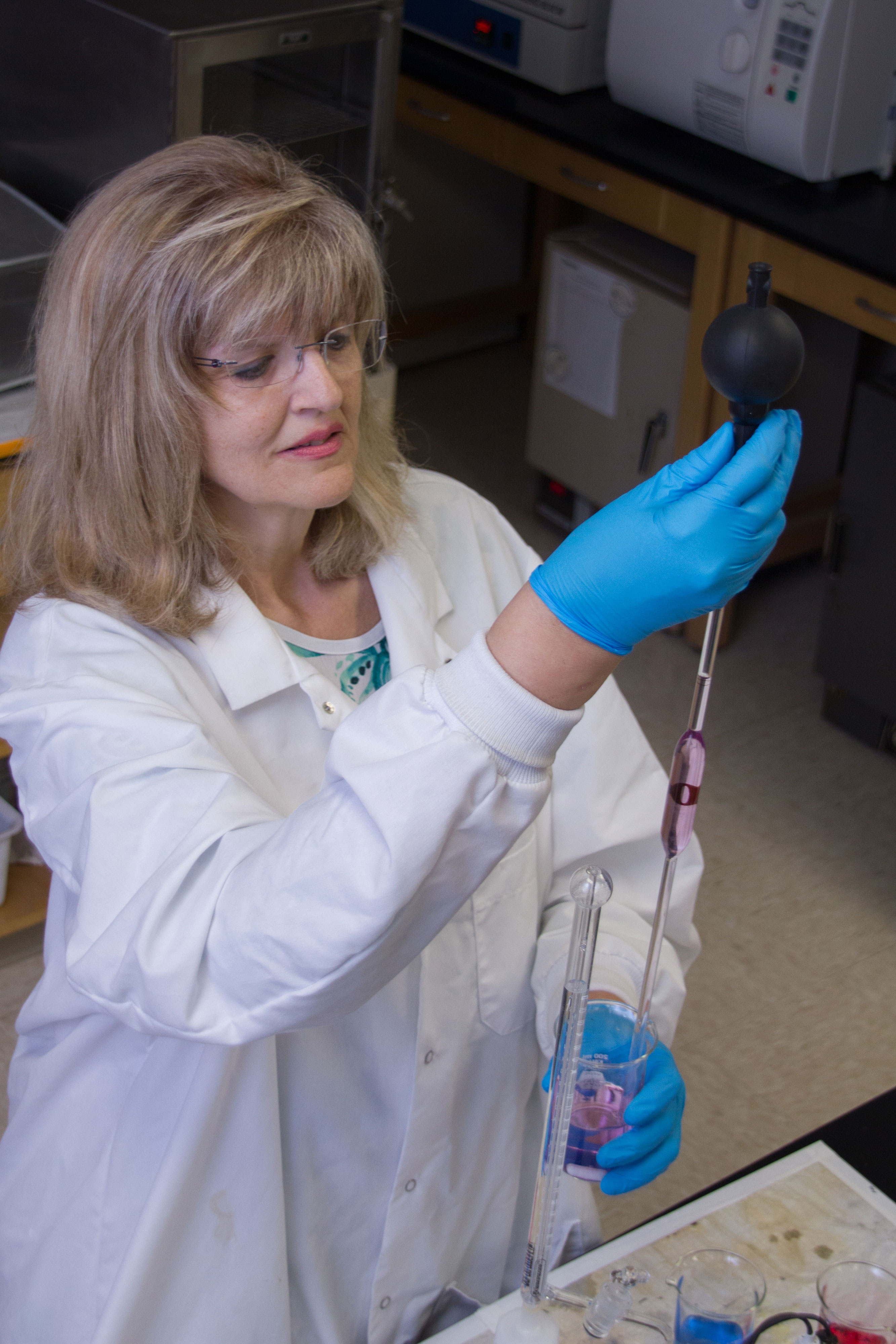Senior chemist Beverly Klein is accustomed to a bustling work environment at the Water and Environmental Engineering Research Center in Crothers Engineering Hall. Undergraduate and graduate students either help her in the service lab or work on their own research projects.
That changed March 23 when all nonessential staff left the South Dakota State University campus due to the COVID-19 pandemic.
“I became the essential person who would keep the lab moving,” Klein said. When WEERC director Chris Schmit asked Klein to take on those responsibilities, her initial response, she recalled, was “on my own?”
Typically, Klein has four undergraduate students and a graduate student, each working anywhere from 10 to 20 hours a week, to assist with water quality testing to meet state permit requirements for more than 25 wastewater and water treatment plants. In addition, the lab does testing for area factories, such as Valley Queen Cheese Factory and Bel Brands, and well water testing for Kingsbury and Brookings counties.
Coping with workload, isolation
“I went from having student help to absolutely nobody,” Klein said. “At first, it was kind of nice, but by Friday, reality hit me in the face. Oh, man, I was tired.” She was working 12-hour days and spending a majority of that time on her feet.
“I am well qualified and can easily do the analyses, but to do so in a timely manner was difficult,” said Klein, who has worked at the lab for 11 years. “It was overwhelming. You get used to providing a certain level of service to people, so when you have to delay or give results late, I feel so bad. For me, there was a lot of anxiety.”
Her supervisor regularly communicated with Klein. “Chris said, ‘Just do your best. Everyone is figuring out how to do this,’” she noted. In addition, the clients and the state regulatory agencies to which they report were understanding once they knew she was working alone.
“By the third week, I was not sure how much longer I could do it,” Klein said. “During my 20s and 30s, I could work at the benchtop 18 hours a day and it did not bother me. I worked insane hours and then went home and took care of my family,” she recalled. “When my kids went to their dad’s, I lived in the lab. I would not go home for three days and it never phased me. If I did that now, you would find me on the floor.”
In addition, Klein was feeling the effects of isolation. Klein is a foster parent to two teenagers who recently joined her household. “I had the kids to talk to, which is fun, but not an adult,” she said. “Before, when I was short on adult time, I could talk to other professionals to get my quota filled. When I walk down the halls, there is nobody here.”
By the sixth week, Klein admitted, “I would start crying sometimes.” However, she added, “When I began feeling sorry for myself, I thought of all the people who are trying to make it on unemployment. As a single parent, I am thankful I have a job.”
Schmit said, “Bev has done an excellent job of keeping the lab going through these challenging times. She has coped with the stress of a heavy workload and being alone in the lab while also doing her best to meet her own high testing standards.”
Establishing new normal
By the latter part of April, Klein had two graduate students helping her. Since May, one student has been working 10 hours a week and the other 12 hours a week. “I am busy, but it’s doable,” she said. “I can hold the status quo.”
She adheres to social distancing guidelines, with each student working in a different portion of the lab. “If one is on the south side running tests, the other person is on the north side of the lab washing glassware and mailing boxes for clients to submit samples,” Klein explained. The students wear gloves, lab coats and goggles and sanitize their work areas with a bleach solution.
“When the students are in the lab, I stay in my office or work in the back, where no one else works,” she said. This month, Klein is looking forward to a little more activity in the building as people begin returning to campus.
However, she still faces challenges due to construction.
The last of the asbestos tiles are being removed from Crothers Engineering Hall, including those in the hallway adjacent to WEERC. The construction crew is trying to minimize the impact by working near the lab in the mornings, when Klein works from home. She comes to the lab in the afternoon.
In addition, the city is replacing a water main along Eighth Street, which means she has to make sure she has water when an outage occurs. “We cannot function without water,” Klein said. If she fills the reverse osmosis tank and is careful about water usage, she figures she can make it work.
After the last three months, Klein has become accustomed to adjusting to new circumstances.
Original post https://alertarticles.info
